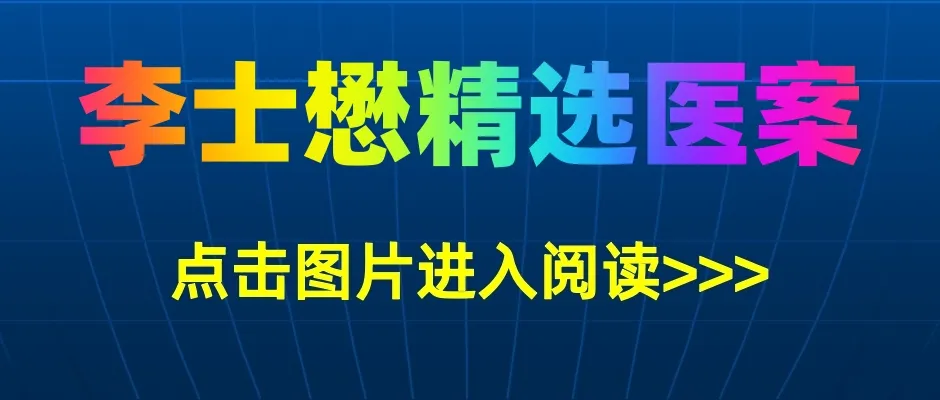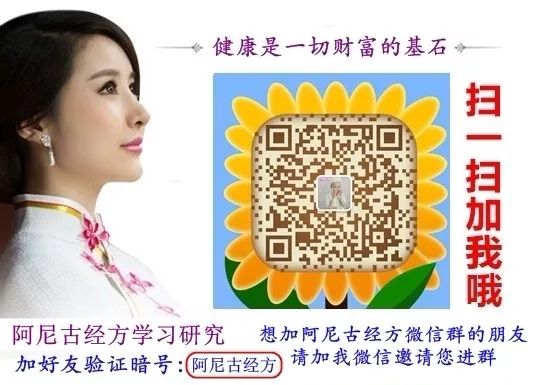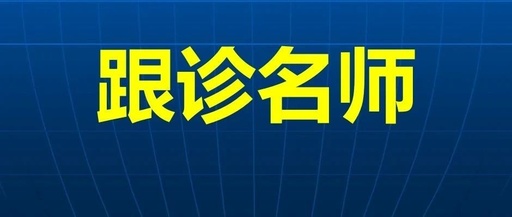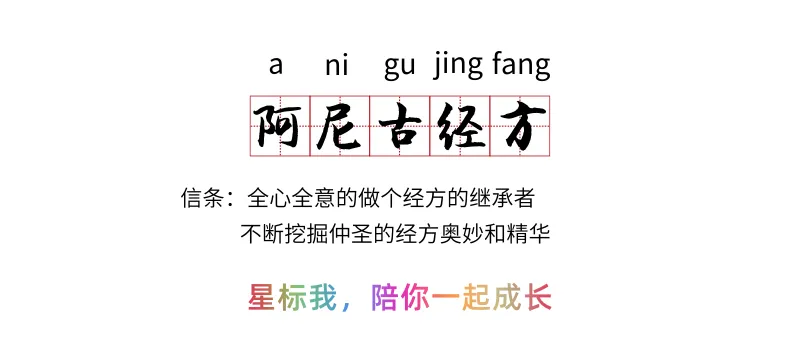
Understanding Pulse Diagnosis by Li Shimao (4) Deep Pulse
Continuing from the last issue:Understanding Pulse Diagnosis by Li Shimao (3) Rapid Pulse
In the “Treatise on Febrile Diseases” by Zhang Zhongjing, it is stated: “The disease of Taiyang manifests as a floating pulse, with stiffness and pain in the head and neck, and aversion to cold.” Is a floating pulse always present in externally contracted diseases? Not necessarily; rather, a deep pulse is often more common, and a deep pulse can also indicate an exterior condition. When cold evil attacks the exterior, it causes contraction and stagnation, and the qi and blood are obstructed by the cold evil, resulting in a deep pulse. As stated in “Four Diagnostic Methods”: “When there is significant exterior cold, the yang qi cannot express outward, and the pulse must first be seen as deep and tight.” In the early stages of warm diseases, the warm evil first attacks the lungs, causing lung qi stagnation, leading to a deep pulse. This deep pulse can be either deep and rapid with force or deep and rapid without force.Case 1 Liu, female, 28 years old, initial diagnosis on April 18, 2014, fever with a maximum of 39.5°C, chills followed by fever in the afternoon, currently with swelling of the left submandibular lymph nodes, diagnosed as lymphadenitis by the provincial second hospital, poor appetite, currently on the 4th day of menstruation, with lower abdominal pain, scanty blood with clots, previously treated with intravenous fluids, tongue red and tender, pulse deep, wiry, thin, and rapid.Diagnosis: Shaoyang stagnant heat.Formula: Xiao Chai Hu Tang combined with Pu Ji Xiao Du Yin.Chai Hu 12g, Huang Qin 9g, Ban Xia 9g, Dang Shen 10g, Huang Lian 9g, Niubangzi 10g, Xuan Shen 12g, Jie Geng 9g, Jiang Can 12g, Ban Lan Gen 12g, Sheng Ma 6g, Ma Bo 4g, Lian Qiao 15g. Three doses, take two doses per day.April 19, 2014, second diagnosis, after taking the medicine, the fever has subsided, sweating occurred, lymph nodes are still swollen, poor appetite, pulse deep, wiry, rapid.Formula: Add Zhi Zi 8g, Chan Tui 8g, Da Huang 5g.Note: In this case, the patient had a fever but did not show a floating pulse; instead, a deep pulse was observed. At this point, the disease location is no longer in Taiyang but has entered Shaoyang. Shaoyang is the pivot of yin and yang, and its pathological nature is half yin and half yang, half deficiency and half excess. The patient also exhibits the characteristics of Xiao Chai Hu Tang syndrome with alternating chills and fever and a wiry pulse. This heat is stagnant in Shaoyang, so Xiao Chai Hu Tang is used to harmonize Shaoyang, and Pu Ji Xiao Du Yin is used to clear heat and detoxify. Upon re-examination, the fever has subsided, and the pulse has turned to deep, wiry, and rapid, indicating significant stagnant heat. AddingZhi Zi, Chan Tui, and Da Huang aims to clear and disperse the stagnant heat.Case 2 Li Jingda, male, 18 years old, initial diagnosis on January 17, 2014, fever for 2 days, current temperature 39°C, chills, body aches, headache, no nausea or vomiting, poor appetite, has not had a bowel movement for 2 days, accompanied by a cough with white phlegm for 1 day, slightly feeling palpitations, current temperature measured at 39.1°C, ECG: sinus tachycardia, sinus arrhythmia, frequent premature ventricular contractions, incomplete right bundle branch block, ST elevation. Pulse wiry, thin, rapid, sometimes sparse, sometimes rapid, deep pulse with reduced yang and wiry.Diagnosis: Qi deficiency and water depletion.Formula: Bu Zhong Yi Qi Tang combined with Li Yin Jian and Sheng Mai Yin.Prescription:Sheng Huang Qi 12g, Dang Shen 12g, Fu Ling 15g, Bai Zhu 10g, Chai Hu 9g, Sheng Ma 6g, Mai Dong 12g, Wu Wei Zi 6g, Rou Gui 5g, Pao Jiang 6g, Dang Gui 12g, Shu Di Huang 40g. Five doses, take three times a day.January 20, 2014, second diagnosis, follow-up, on the same day took 2 doses within 1 hour, fever reduced from 39.8°C to 38.6°C, fever subsided the next day, ECG showed no more premature contractions.Note: If we do not observe the pulse, based solely on symptoms, it resembles Ma Huang Tang syndrome, but upon examining the pulse, it is wiry, thin, rapid, sometimes sparse, sometimes rapid, and the deep pulse indicates qi deficiency and water depletion. If we use Ma Huang Tang to release the exterior and disperse cold, it may harm yin and deplete yang. The prescription of Bu Zhong Yi Qi Tang is to tonify qi, which is indeed Li Dongyuan’s method of gently warming and eliminating great heat, while Li Yin Jian nourishes kidney water, and Sheng Mai Yin tonifies qi and nourishes yin, addressing multiple aspects. In just 5 doses, the medicine effectively resolved the illness, achieving results like a drumbeat.Teacher Li Shimao emphasizes the process of critical thinking, how to analyze symptoms based on pulse diagnosis, and then accurately differentiate syndromes and rationally prescribe medication. This is a complete system of critical thinking; only when each step is clear can the patient recover, thus earning the title of a “clear-minded doctor.”The principle of Traditional Chinese Medicine is to differentiate syndromes and treat accordingly, which is the method of critical thinking in TCM. How to differentiate? Where to start? One must rely on the pulse as the basis, using the pulse to differentiate syndromes. As the saying goes, “What is within must manifest without.” The external symptoms are an external reflection of internal diseases. By using external observations to infer internal changes, guided by TCM theory, one can deduce the internal variations. However, symptoms can be typical or atypical, requiring careful differentiation. This highlights the importance of pulse diagnosis, as the pulse is not deceptive; the key is how the doctor understands it.Teacher Li Shimao often says: “Teach a person to fish, rather than give them fish.” “Fishing” refers to critical thinking; mastering the thought process of differentiation allows for flexible application in clinical practice, without being rigidly bound to a specific method or formula, remaining at the level of experiential formulas. While helping Teacher Li Shimao transcribe prescriptions, I also gained a certain understanding of his commonly used formulas and herbs. When encountering special diseases, Teacher Li Shimao would explain in detail how to determine differentiation based on pulse diagnosis and why these symptoms occur.In order to promote the development of Traditional Chinese Medicine and better pass on his academic thoughts to the younger generation of TCM students, Teacher Li Shimao adopts a PBL (Problem-Based Learning) teaching method, enabling his outstanding disciples to grasp his academic thoughts more quickly and effectively. Each patient who comes for treatment requires the disciples to first establish a case and write out their differentiation, prescription, and medication, which Teacher Li Shimao then reviews. Subsequently, the students can raise questions, and Teacher Li Shimao provides answers. For us undergraduates, Teacher Li Shimao also gives us the same opportunity to independently prescribe, which is then reviewed by Teacher Li Shimao, helping us clearly recognize our shortcomings and how to improve, aiding us in mastering clinical skills. Below are nine cases I have treated, along with Teacher Li Shimao’s reviews and my own reflections.Case 3 Wang, female, 55 years old, initial diagnosis on March 4, 2013, stomach distension, cannot eat cold food, feels better with warmth, weakness in both lower limbs, right leg heavier, worsens after walking, developed red rashes on the neck after eating lamb during the New Year, generalized red rashes for 3 years, occurring from May to October, relieved after intravenous treatment, dry stools, once a day, dizziness, western medicine diagnosed as cerebral arteriosclerosis, thick blood, mammary gland hyperplasia. Taking Ru Pi Xiao, breast pain worsens when angry, now no pain, tongue coating yellow and greasy, pulse deep, wiry, thin, and weak.Diagnosis: Qi deficiency, superficial muscle not solid.Method: Tonify qi, nourish blood, dispel wind.Formula: Huang Qi Jian Zhong Tang.Huang Qi 15g, Gui Zhi 12g, Bai Shao 15g, Sheng Jiang 5 slices, Da Zao 6 pieces, Zhi Gan Cao 7g, Yi Tang 20mL, Du Huo 15g, Sang Ji Sheng 20g, Dang Gui 15g, Fu Ling 15g,Chao Bai Zhu20g, Fang Feng 7g. Seven doses, decoct and take.Teacher Li Shimao’s review: Pulse deep, wiry, thin, and weak.Diagnosis: Blood obstruction, both Ying and Wei are deficient.Formula: Huang Qi Gui Zhi Wu Wu Tang. Remove Du Huo, Sang Ji Sheng, Fang Feng.Note: My differentiation thought for this case started from the spleen and stomach, mainly treating the patient’s stomach distension and dry stools. The neck rash was caused by eating lamb, and regulating the spleen and stomach could also help the rash subside. Based on the pulse diagnosis, I diagnosed qi deficiency, as qi deficiency leads to poor transportation, hence the stomach distension; qi deficiency results in weak propulsion, leading to dry stools; qi deficiency cannot protect the exterior, allowing wind to invade the skin, hence the rashes; qi deficiency leads to the failure of clear yang to reach the upper position, resulting in dizziness. I treated with Huang Qi Jian Zhong Tang with modifications to strengthen the middle and support the spleen, and added Fu Ling, Bai Zhu to tonify the middle earth. Considering the weakness in both lower limbs, I added Du Huo, Sang Ji Sheng to treat the symptoms, and added Fang Feng to take the meaning of Yu Ping Feng San to treat the neck rash, and included Dang Gui to nourish blood and invigorate blood circulation, following the principle of “treating wind first requires treating blood; when blood flows, wind will naturally dissipate.”Teacher Li Shimao believes that the pulse is thin and not obvious, yet has a stasis sign. This stasis pulse is not what Li Shizhen described in “Binhai Pulse Studies”: “Thin, slow, short, and stasis pulses are difficult to discern, like rain touching sand easily disperses, while sick silkworms eat leaves slowly and laboriously.” Teacher Li Shimao’s understanding of stasis pulse refers to the amplitude of the pulse beat being smaller than normal, and the flow is not smooth, indicating blood stasis. Thus, the differentiation is made as blood obstruction and both Ying and Wei are deficient, and the formula used is Huang Qi Gui Zhi Wu Wu Tang. Huang Qi Gui Zhi Wu Wu Tang is derived from the “Essentials of the Golden Chamber: Blood Obstruction and Deficiency Syndromes” which states: “Blood obstruction, both yin and yang are weak, the pulse at the cun position is weak, and the pulse at the chi position is tight, with external symptoms of body numbness, resembling wind obstruction, Huang Qi Gui Zhi Wu Wu Tang is the main treatment.” Although the two formulas have similar ingredients, I made an error in differentiation, and Teacher Li Shimao pointed out that my prescribed formula lacked clarity in thought and did not require the addition of Du Huo, Sang Ji Sheng, Fang Feng. Once the blood stasis is resolved and Ying and Wei are replenished, all symptoms can improve.From this case, I learned that “to treat a disease, one must seek the root cause”; otherwise, treating symptoms with corresponding medications violates the purpose of differentiation, rendering the differentiation and treatment system meaningless.Case 4 Liu, female, 25 years old, initial diagnosis on April 29, 2013, dysmenorrhea for over 10 years, menstrual cycle 30 days, duration 5-6 days, normal color, with a small amount of blood clots, usually has a bad temper, especially before menstruation, pain on the first day of menstruation lasting 4 hours, requires painkillers, with lower back pain. Pulse deep, wiry, slippery, rapid, tongue slightly red.Diagnosis: Liver qi stagnation, blood flow obstruction.Method: Soothe the liver and relieve stagnation.Formula: Dan Zhi Xiao Yao San.Chai Hu 7g, Dang Gui 12g, Bai Shao 15g, Fu Ling 15g, Bai Zhu 10g, Zhi Gan Cao 8g, Lian Qiao 15g, Mu Dan Pi 9g, Zhi Zi 12g. Seven doses, decoct and take.Teacher Li Shimao’s review: Pulse deep, wiry, tight, slippery, rapid, tongue can be.Diagnosis:Cold congealing and heat stagnation.Method: Disperse cold, clear and penetrate stagnant heat, with blood invigorating assistance.Formula: Fang Feng Tong Sheng San.Da Huang 4g, Jing Jie 7g, Ma Huang 6g, Lian Qiao 12g, Chao Zhi Ke 9g, Chuan Xiong 8g, Dang Gui 12g, Huang Qin 10g, Xiang Fu 12g, Pu Huang 12g, Wu Ling Zhi 12g.Note: Dysmenorrhea is a common gynecological condition, often closely related to women’s temper or exposure to cold. This patient reported a bad temper, and the pulse deep, wiry, slippery, rapid led me into a thinking bias, so I differentiated it as liver qi stagnation and blood flow obstruction, using Dan Zhi Xiao Yao San to soothe the liver and relieve stagnation, invigorate qi and blood, and added Lian Qiao to clear the stagnant heat.Teacher Li Shimao diagnosed the pulse as deep, wiry, tight, slippery, rapid, with tight pulse described as “lifting like a twisted rope and cutting like a string.” Every time he felt a tight pulse, Teacher Li Shimao would explain in detail, drawing two lines half a centimeter apart on his fingertip, explaining: “A tight pulse feels like the pulse beat position is not fixed, moving left and right, giving a feeling of lateral flicking.” According to “Binhai Pulse Studies”: “Tightness is the main cause of all pain due to cold.” In this case, the pulse is deep, wiry, tight, slippery, and rapid, indicating external cold evil congealing and internal heat stagnation, thus diagnosed as cold congealing and heat stagnation. Therefore, Fang Feng Tong Sheng San is used to externally resolve cold congealing and internally clear stagnant heat. Additionally, the patient experiences significant abdominal pain, requiring painkillers for relief. Abdominal pain is an important indicator of blood stasis; the more pronounced the abdominal pain, the heavier the blood stasis, hence Shi Xiao San is added to invigorate blood and resolve stasis.From this case, I learned that treating a disease cannot rely on fixed thinking patterns, influenced by the patient’s subjective narrative, and must not assume the patient belongs to a certain category of disease. One must carefully examine the pulse and differentiate based on the pulse.
Related Recommendations:
Recommended Books: TCM Book List Issue 1
Recommended Books: TCM Book List Issue 2
WeChat has been revamped!!!
Now, encountering our articles is all about fateEveryone remember to “star” the Anigu Jing Fang learning “three connections”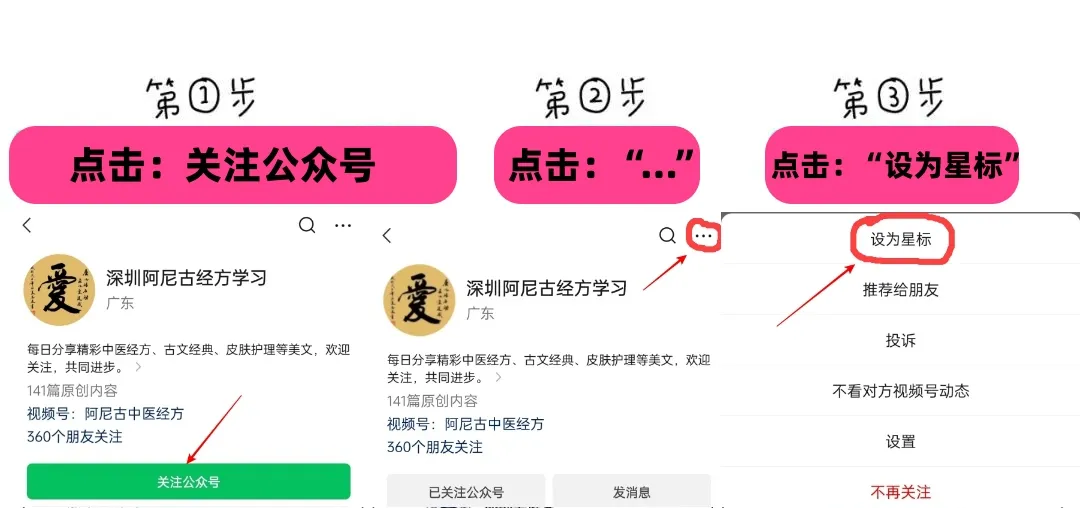
Copyright Statement
-
This article is excerpted from “Understanding Pulse Diagnosis by Li Shimao”
-
Editor: Wang Sipin; Edited by Liu Jifang
-
Copyright belongs to the relevant rights holders, and reprinting is aimed at spreading TCM knowledge. If you like Teacher Li’s works, please purchase genuine books. If there are any improper uses, please feel free to contact us.
I Submission Email [email protected]
【Li Shimao】 Exciting Medical Discussions【Click the text in the table to read directly】
Reflections on TCM Education |
Positioning TCM as Practical Medicine |
| Reflections on Integrating TCM and Western Medicine | Review and Reform of TCM Education |
| Insights from Professor Qin Bowei’s Lectures |
Discussing the Five Movements and Six Qi
Combining Disease Differentiation and Syndrome Differentiation
Discussing Differentiation and Treatment (Syndrome)
Discussing Differentiation and Treatment (Treatment)
